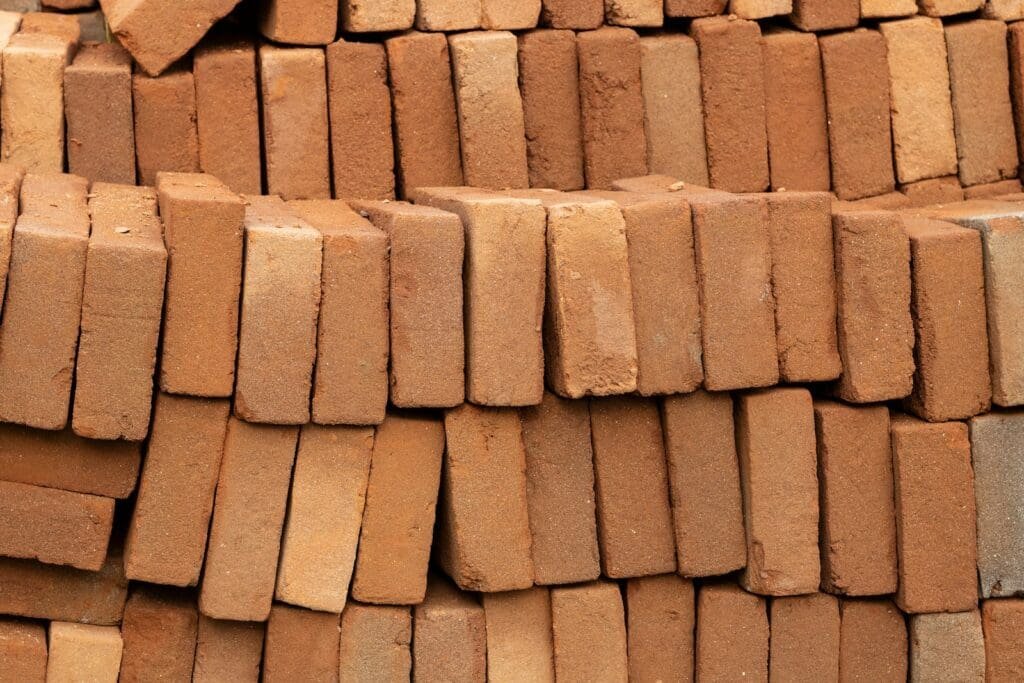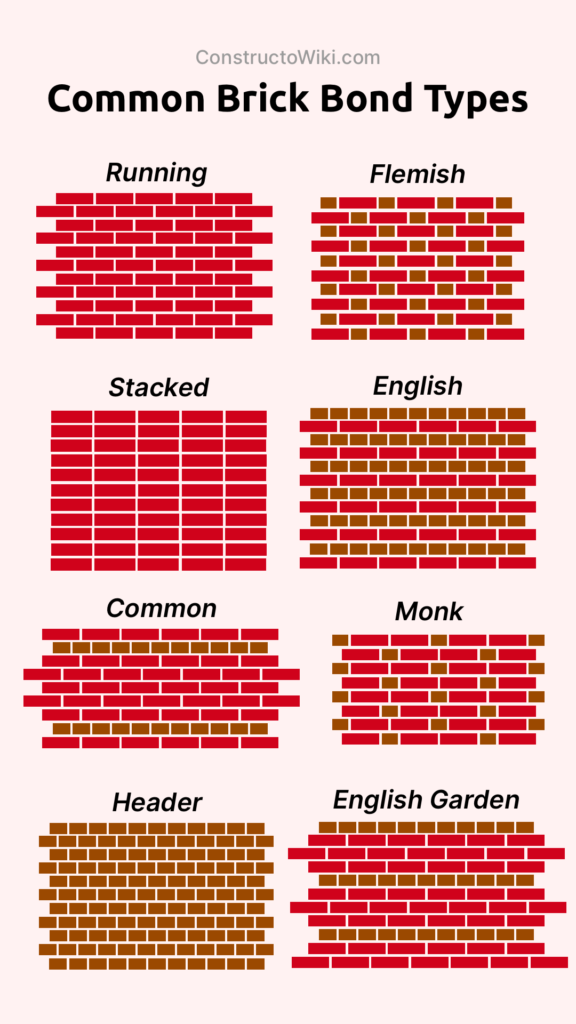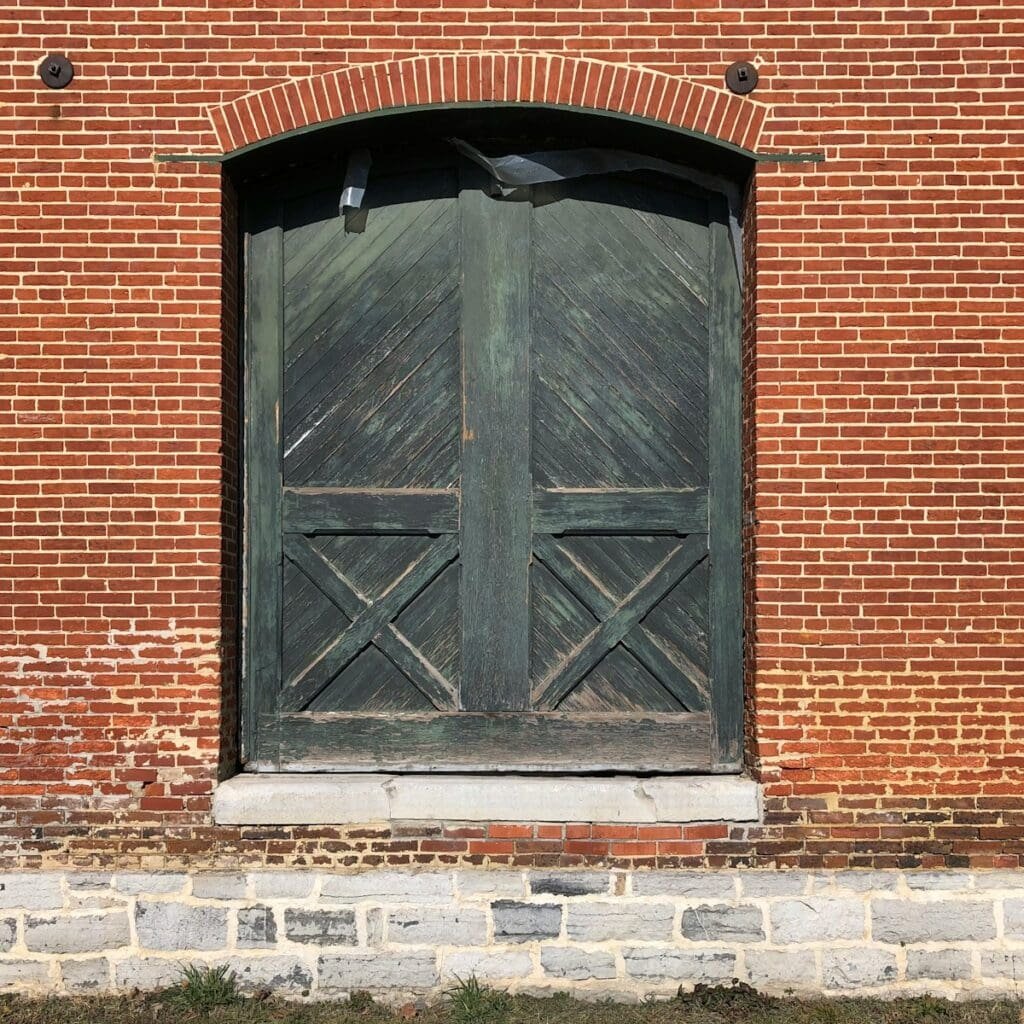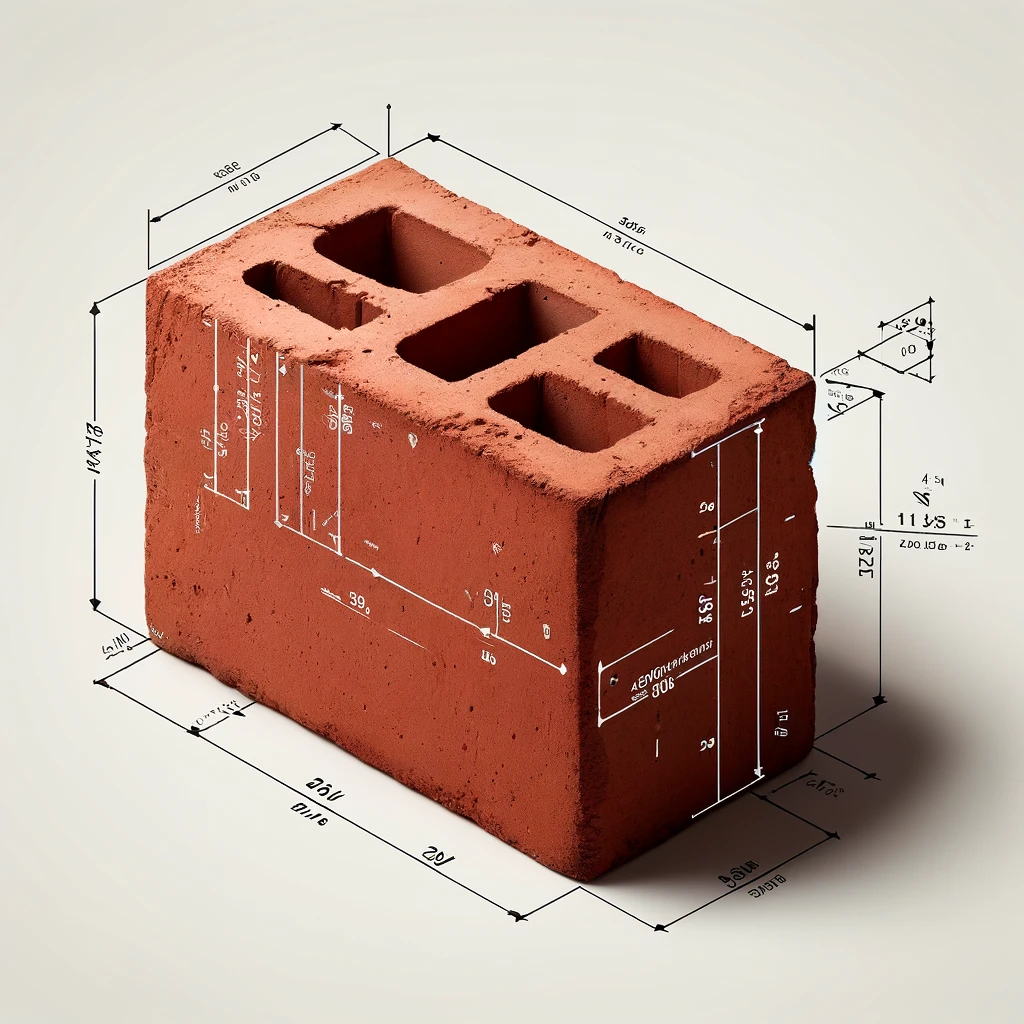Introduction To Masonry Courses in Construction
Have you ever wondered what holds a brick wall together so securely?
Understanding the basics of masonry is essential, even if you’re not in the construction industry.
In this blog post, we’ll clarify courses in masonry, which are vital for both the structural integrity and aesthetic appeal of masonry work.
We’ll start by defining a course in masonry and explore different types of courses such as header, stretcher, and rowlock courses.
Moreover, we’ll explain the components that form these courses and their importance in construction.
Finally, we’ll discuss advanced techniques, modern materials, and tools that can enhance longevity and sustainability in masonry work.
Table of Contents
Masonry Terms: Understanding Courses in Construction

What is a Course in Masonry?
A course in masonry refers to a single horizontal layer of bricks or stones laid in a wall. Courses can be regularly or irregularly spaced and often indicate different structural functions and aesthetics within the wall. Each course is essential for the stability and appearance of a masonry structure.
Types of Courses
Understanding the different types of courses will help you identify their functions in masonry construction:
- Header Course: Bricks are laid with their ends facing the wall’s exterior.
- Stretcher Course: Bricks are laid lengthwise, exposing their long sides.
- Rowlock Course: Bricks are laid on edge with the narrow face exposed.
- Sailor Course: Bricks are laid vertically, showing their widest face.
Components of Masonry Courses
| Component | Description |
|---|---|
| Mortar | The bonding material used to set bricks or stones in each course. |
| Bond | The pattern or arrangement of bricks in a course to ensure stability. |
| Joint | The gap or space filled with mortar between individual bricks or stones. |
Importance of Courses in Masonry Construction
Courses are critical for both aesthetic and structural reasons. Properly aligned courses ensure the even distribution of weight, stability, and durability of the wall. The type of course used can also impact the visual appearance of the masonry work.
Exploring Advanced Masonry Techniques

Advanced Masonry Course Techniques
Beyond the basics of course types in masonry, several advanced techniques and configurations can significantly impact the strength, durability, and aesthetics of masonry structures. These methods are often employed in specialized or complex building projects.
Specialty Course Configurations
Certain configurations can address specific architectural needs and enhance the structural integrity and appearance of masonry walls:
- Quoining: Alternating large and small stones or brickwork at the corners of a wall, providing both structural reinforcement and aesthetic appeal.
- Flemish Bond: A pattern where each course alternates between a header and a stretcher. This provides a stronger bond and a visually intricate design.
- English Bond: An arrangement alternating between a course of headers and a course of stretchers. This method offers great strength and is typical in thick walls.
Enhancing Longevity and Integrity
Attention to specific details in masonry construction can significantly extend the life and integrity of the structure:
- Weep Holes: Small openings added at the base of walls to allow trapped moisture to escape, preventing damage from freeze-thaw cycles or prolonged dampness.
- Expansion Joints: Flexible joints incorporated into the masonry to absorb expansion and contraction, preventing cracks and structural compromise due to temperature variations.
- Reinforced Masonry: The integration of steel rebar or mesh within courses to provide additional tensile strength, especially significant in seismic zones.
Modern Masonry Materials and Techniques
With advancements in technology and materials, modern masonry now incorporates innovative solutions to traditional challenges:
- Concrete Masonry Units (CMUs): Precast concrete blocks that can be used as an alternative to traditional clay bricks, offering enhanced strength, fire resistance, and versatility.
- Insulating Concrete Forms (ICFs): Polystyrene blocks filled with concrete, which combine the strength of concrete with high thermal insulation, making them ideal for energy-efficient buildings.
- Geopolymer Binders: Eco-friendly alternatives to traditional Portland cement, these binders reduce the carbon footprint of masonry construction while providing excellent durability and thermal resistance.
Detailed Look at Brick Courses in Masonry

What is a Course of Bricks?
A course of brick refers to a single row of bricks laid horizontally in a wall. Each course is a fundamental unit in bricklaying that determines the wall’s overall stability, strength, and aesthetics. While the previous part discussed general concepts, here we’ll explore additional aspects essential to understanding brick courses in masonry.
Orientation of Bricks
The orientation of bricks in a course can greatly affect both the appearance and the structural integrity of a wall. Here are more ways bricks can be oriented in a course:
- Flemish Bond: A pattern alternating between a header and a stretcher within each course. This method is not only visually appealing but also provides a strong bond.
- English Bond: Alternates between one course of headers and one course of stretchers. This arrangement is recognized for its strength and is commonly used in thicker walls.
- Stack Bond: Bricks are aligned in a grid-like pattern, providing a modern aesthetic. This bond is less strong compared to others and usually reinforced with steel.
- Common Bond (American Bond): Features several stretcher courses followed by a header course to tie the wall together, enhancing its stability.
Advanced Course Techniques
Exploring more advanced techniques can introduce new functionalities and aesthetic possibilities:
- Running Bond: The most common pattern where each brick is offset by half the width of the brick above or below it. This pattern offers good distribution of loads and is easy to lay.
- Brick Nogging: A historical bonding technique where bricks are laid between wooden frames, providing both rigidity and insulation in timber-framed structures.
- Rat-Trap Bond: A technique where bricks are placed on edge, creating a cavity within the wall, thus improving thermal insulation while using fewer bricks.
Materials and Tools for Laying Courses
Selecting the right materials and tools is essential for effective masonry construction. Let’s explore into some essential components:
Materials
- Clay Bricks: Traditional bricks made from fired clay, offering durability and a classic appearance.
- Concrete Bricks: Made from concrete, these bricks provide high strength and versatility but can be less aesthetically pleasing than clay bricks.
- Fire Bricks: Specially designed to withstand high temperatures, used in constructions like chimneys and fireplaces.
Tools
- Trowel: Used for spreading mortar and setting bricks.
- Spirit Level: Ensures that each course is perfectly horizontal.
- Brick Hammer: For cutting and fitting bricks.
- Jointers: Tools for smoothing the mortar joints between bricks.
- Plumb Line: Ensures vertical alignment of the wall.
- Pointing Trowel: For fine detail work on the mortar joints.
Environmental Considerations in Masonry
With growing emphasis on sustainability, environmental considerations are becoming more significant in masonry construction:
- Reuse of Bricks: Salvaged bricks can be reused in new construction, reducing waste and preserving historical materials.
- Low-Carbon Mortar: Using environmentally friendly mortars with reduced cement content to lessen the carbon footprint.
- Green Insulation Materials: Incorporating eco-friendly insulation materials, such as hemp or recycled cotton, to improve energy efficiency.
- Rainwater Harvesting Systems: Integrating systems to capture and reuse rainwater, reducing the need for municipal water in construction and maintenance.
For more comprehensive coverage on modern masonry practices, refer to publications like Concrete Construction, which provide up-to-date industry insights.
How Long is the Mason Course?

Standard Brick Course Measurement
In masonry, the length of a course often varies depending on the type of brick or stone used, as well as the specific construction requirements. However, some standard measurements are commonly adhered to in the industry:
- Standard Brick Size: The most frequently used brick size in the U.S. measures approximately 8 inches (length) x 2.25 inches (height) x 3.75 inches (width).
- Course Height: When laid with mortar, the combined height of a single course is typically around 3 inches to 3.5 inches.
Calculating the Length of a Course
To determine how many bricks are needed per course along the length of a wall, you simply divide the length of the wall by the length of a brick, taking into account the mortar joints. Here is a simple formula to estimate the number of bricks per course:
Number of Bricks per Course = Wall Length (in inches) / (Brick Length + Mortar Joint Width).
Let’s consider an example where the wall length is 120 inches, and the brick and mortar together equal 8.25 inches:
Number of Bricks per Course = 120 inches / 8.25 inches ≈ 14.5 bricks.
In this case, you’ll need approximately 15 bricks per course.
Variations in Course Length
The length of a masonry course can vary based on a few key factors:
- Masonry Unit Type: Different types of masonry units like concrete blocks, stone, or custom-sized bricks will influence the length and overall dimensions of the courses.
- Joint Width: The thickness of the mortar joint also affects the course length. Standard joint thickness typically ranges from 3/8 inch to 1/2 inch.
- Structural Requirements: For certain engineered brick or block walls, specific structural calculations may dictate the precise lengths and configurations of courses to meet load-bearing or architectural design criteria.
Applications of Different Course Lengths
Different course lengths and arrangements serve various functions in masonry construction:
- Decorative Features: Custom course lengths and configurations can create unique aesthetic details such as arches, quoins, or corbelling.
- Structural Integrity: Adjusting the length and pattern of courses can reinforce specific areas, improving the structural stability of the wall.
- Functional Design: Specialty brickwork like cavity walls or the inclusion of weep holes may require precise course lengths to ensure functionality and durability.
Modern Innovations in Masonry Courses
With advancements in construction technology, the approach to laying masonry courses is evolving:
- Prefabricated Masonry Units: Pre-assembled sections can expedite construction and ensure precision in alignment and course length.
- 3D Printing: Innovative 3D printing technology allows for the creation of customized masonry units and course designs that may not adhere to traditional measurements.
- Advanced Measurement Tools: Laser levels and digital measuring devices ensure accurate placement of each course, optimizing both the structural integrity and aesthetic appeal of the wall.
For more information on the latest innovations in masonry, check out this page for more info.
Masonry Terms: Understanding Courses in Construction
In summary, understanding courses in masonry is essential for both aesthetic and structural aspects of construction.
A course represents a single horizontal layer of bricks or stones, with various types such as header, stretcher, rowlock, and sailor courses.
Proper alignment and selection of courses can significantly enhance the durability and visual appeal of masonry structures.
Key components such as mortar, bond, and joints are crucial in masonry construction.
Advanced techniques, modern materials, and tools play a vital role in achieving efficient and sustainable construction.
Ultimately, mastering these elements leads to high-quality, resilient masonry work.
Frequently Asked Questions – FAQs
What is a Course in Masonry?
A course in masonry refers to a single horizontal layer of bricks or stones placed in a wall. Each course is vital for the wall’s stability and aesthetics.
What are the different types of courses?
The main types of courses include header, stretcher, rowlock, and sailor courses, each with its unique layout and function.
What are the key components in masonry courses?
Key components include mortar for bonding, bond patterns for stability, and joints for spacing between bricks or stones.
Why are courses important in masonry construction?
Courses are crucial for both structural integrity and aesthetics, ensuring even weight distribution and enhancing visual appeal.
What modern tools and materials are used in masonry?
Modern masonry often uses tools like trowels, spirit levels, and advanced materials such as CMUs, ICFs, and geopolymer binders for enhanced performance and sustainability.






